Skidmore, Texas, Bee county. (original) (raw)
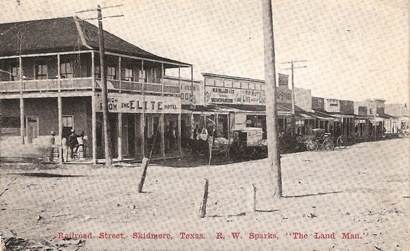
History in a Pecan Shell
The town�s namesake is Virginian Samuel Cyle Skidmore, who moved to Texas shortly before the Civil War. A short-lived post office opened in 1860 under the name of River Side and closed its doors the same year.
A second post office opened and was named Lattington, after the postmaster. In 1886 Sam Skidmore�s son Frank donated a right-of-way to the San Antonio and Aransas Pass Railroad and the town of Skidmore was on its way. A new post office opened in 1887 under the name of Skidmore and the rest of what had been Lattington moved to the new site in the early 1890s.
The railroad brought new prosperity and Skidmore soon had its own doctor and newspaper. The population reached 1,000 by 1914.
The down suffered three disastrous fires (1913, 1918, and 1929) which curtailed growth for decades. The population however didn�t decline dramatically and by 1950 it was reported as 925.
Improved roads and the towns proximity to Corpus Christi has drained off population and by the 1980s it had been reduced to 500 which has since rebounded to just over 1,000.
Skidmore Photos & Vintage Postcards
Photographer's Note:
The last of the railroad tracks were taken up a few years ago and the old businesses along the tracks are all gone now and businesses mainly are on the main drag (Highway 181) through town. - Will Beauchamp, October 2008
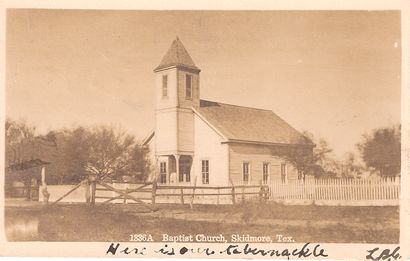

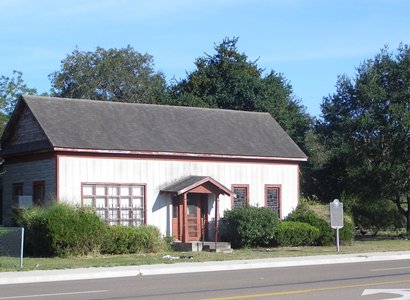
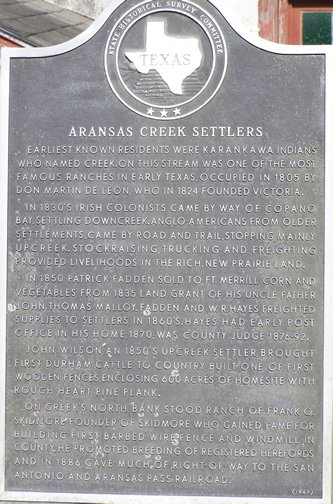
Aransas Creek Settlers historical marker
in front of the museum
Photo courtesy of Will Beauchamp
Historical Marker:
Aransas Creek Settlers
Earliest known residents were Karankawa Indians who named creek. On this stream was one of the most famous ranches in early Texas, occupied in 1805 by Don Martin de Leon, who in 1824 founded Victoria.
In 1830's Irish colonists came by way of Copano Bay, settling downcreek. Anglo-Americans from older settlements, came by road and trail, stopping mainly upcreek. Stockraising, trucking and freighting provided livelihoods in the rich, new prairie land.
In 1850 Patrick Fadden sold to Ft. Merrill corn and vegetables from 1835 land grant of his uncle, Father John Thomas Malloy. Fadden and W.R. Hayes freighted supplies to settlers in 1860's. Hays had early post office in his home, 1870; was county judge 1876-92.
John Wilson, an 1850's upcreek settler, brought first Durham cattle to country; built one of first wooden fences, enclosing 600 acres of homesite with rough heart pine plank.
On creek's north bank stood ranch of Frank O. Skidmore, founder of Skidmore, who gained fame for building first barbed wire fence and windmill in county. He promoted breeding of registered Herefords and in 1886 gave much of right-of-way to the San Antonio and Aransas Pass Railroad.
(1967)
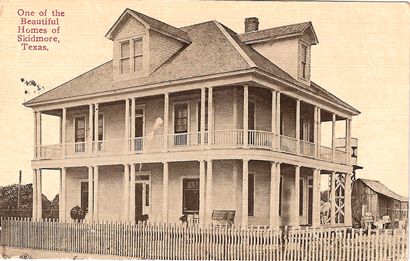
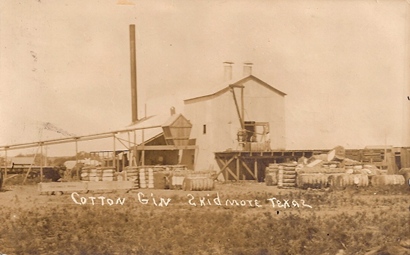
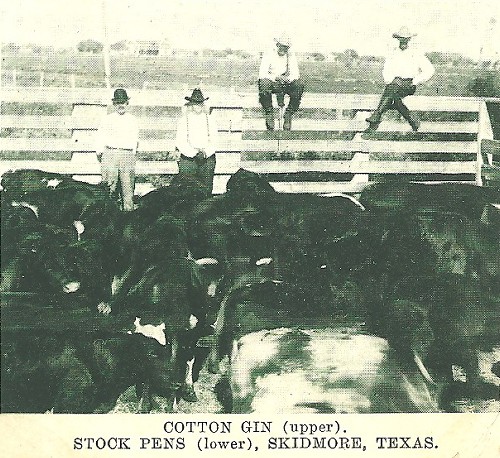
Texas Escapes, in its purpose to preserve historic, endangered and vanishing Texas, asks that anyone wishing to share their local history, stories, landmarks and recent or vintage photos, please contact us.